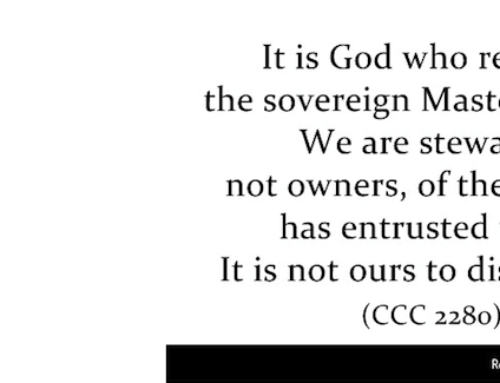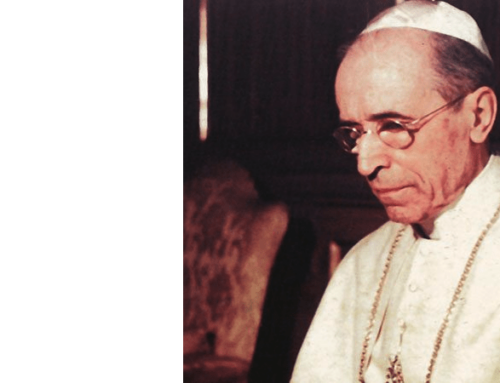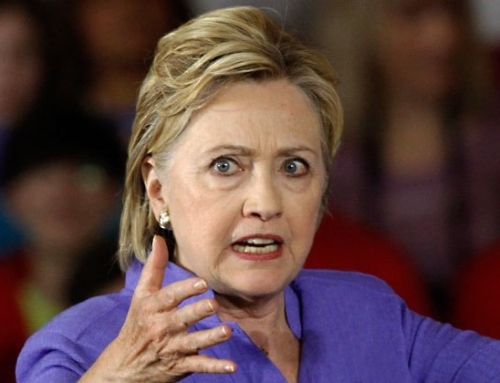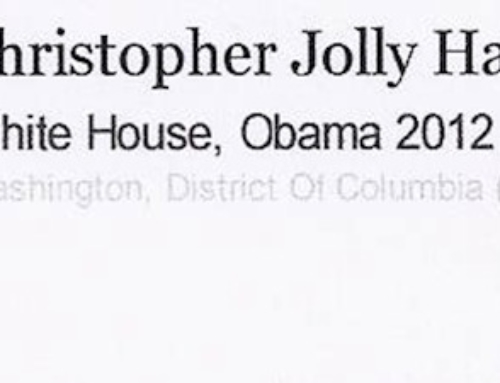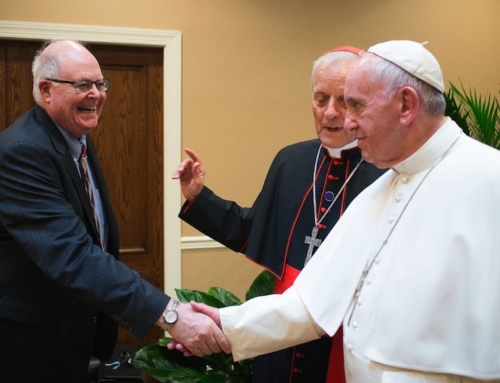by Joseph De Feo
(Catalyst 3/2003)
Justice Felix Frankfurter wrote, “A phrase begins life as a literary expression; its felicity leads to its lazy repetition; and repetition soon establishes it as a legal formula, undiscriminatingly used to express different and sometimes contradictory ideas.” The foregoing lines represent an apt condensation of Professor Daniel L. Dreisbach’s thesis in his book Thomas Jefferson and the Separation between Church and State. This slim volume consists of a relatively short essay on Jefferson’s “wall of separation” metaphor, some primary sources, and a wealth of notes. Although Dreisbach calls the work merely a “sourcebook”—and it is an excellent one—it is hard for the reader to glance over the bare facts of the case without sincere and grave doubts about both the legitimacy and the desirability of the concept of a “wall of separation.”
Unlike many other recent treatments of church-state relations, Dreisbach’s study concentrates on the life of a metaphor—the “wall of separation between church and state”—and how it compares to the actual Constitutional law it is meant to represent. Thomas Jefferson used the phrase in 1802 in his response to the Danbury Baptist Association, which had written to the president to congratulate him on his electoral victory. He wrote, “…I contemplate with sovereign reverence that act of the whole American people which declared that their legislature should ‘make no law respecting an establishment of religion, or prohibiting the free exercise thereof,’ thus building a wall of separation between Church & State.”
Dreisbach makes the persuasive case that Jefferson wrote his famous letter to “hurl a brick” at his Federalist opponents, who had branded him an atheist in the bitter election of 1800; his pious tone and offer of prayer were meant to silence his foes: “I reciprocate your kind prayers for the protection and blessing of the common Father and Creator of man, and tender you for yourselves and your religious association, assurances of my high respect and esteem.”
Jefferson wrote also to appease some of his supporters—the Danbury Baptists, who voted Democratic-Republican and suffered under harsh regulation from the Congregationalist (and mostly Federalist) establishment in Connecticut. Connecticut in the early 19th century, like many states, had an established church. The state was firmly Congregational, with ministers on state salaries; dissenting religious groups, such as the Baptists, usually paid for the support of the established church, and did not enjoy the same privileges as Congregational ministers (e.g., for a time they could not even perform legal marriage ceremonies). This was perfectly legal, because the Constitution only prohibited the federal government from passing laws “respecting an establishment of religion”; and the Bill of Rights provides, through the tenth amendment, that, “The powers not delegated to the United States by the Constitution, nor prohibited by it to the states, are reserved to the states respectively, or to the people.” The power to establish a state religion, then, though denied to the United States, was reserved to the individual states.
Jefferson’s acknowledgement of this federalist structure is evident in his conduct in office: he refused to proclaim federal days of prayer or fasting while president, breaking with the tradition of his predecessors; on the other hand, he drafted resolutions in support of such days of prayer while in the Virginia House of Burgesses and as governor of Virginia. Jefferson, Dreisbach shows, held a jurisdictional view of the First Amendment.
It is clear from Jefferson’s letter to the Danbury Baptists that he did hope in time to “see with sincere satisfaction the progress of those sentiments which tend to restore to man all his natural rights…”; he here referred to the eventual disestablishment of the various churches in the states, to match the federal government. But he would never have considered that the First Amendment could be used to do this, because he was committed both to federalism and to limited central government; he would have thought it a transgression for the federal government to stomp on the states’ sovereignty.
Of course, a belief in disestablishment does not entail hostility to religion in government. Jefferson frequently showed his belief that the federal government is permitted to perform acts of hospitality toward religion without threatening the First Amendment. Not only did he ask listeners to join him in prayer in his second inaugural address; Dreisbach notes that he “personally encouraged and symbolically supported religion by attending public church services in the Capitol,” in January of 1802 and with some frequency thereafter. He also negotiated a treaty with the Kaskaskia Indians designating federal moneys to pay for the construction of a Catholic church and the salary of a Catholic priest. His notion of a “law respecting the establishment of religion” was obviously more robust than the stark image of the “wall of separation.”
Despite Jefferson’s nuanced thought on the relationship between church and state, jurists have seized on one phrase in his letter, presenting a caricature of Jefferson’s views to promote their secularization of the U.S. government—which Dreisbach suggests Jefferson might have found objectionable.
The metaphor is not truly analogous to the Constitutional arrangement of church and state. The wall of separation presupposes that government and religion are wholly distinct and can be divided as though by a physical structure. A strict wall would eliminate practices that even supporters of strict separation now take for granted: for instance, military chaplains and tax exemptions for religious organizations. And it would be outrageous to ask legislators to leave their religion at home—not to mention harmful; the Bible is not Mein Kampf, although the ACLU and Americans United for the Separation of Church and State might sooner allow the latter than the former to be read in Congress. The wall also tends to undermine the proper idea of freedom of religion, which should be like freedom of the press: the free press is protected from government interference. Banning the press from the public square would be viewed as an outrage; not so with religion.
What is more puzzling than the continual historical distortion of Jefferson’s views is the fact that they matter at all in this debate. Jefferson’s metaphor has become a canonized gloss on the First Amendment, despite the man’s noticeable absence from this country during both the Constitutional Convention and the debate on the Bill of Rights during the First Federal Congress (he was the U.S. Minister to France); not to mention the fact that Jefferson was never on the Supreme Court. And there is no evidence that the phrase to which so much attention is now paid, was ever again uttered or written by Jefferson after he penned it in 1802.
Dreisbach attributes the phrase’s continuing power partly to the unique advantages of metaphor in legal analysis. Metaphors liven up legal language, provide concrete images of the abstract, and engage the reader, causing him to make comparisons between the metaphor and that which it represents; all of which make the concept more memorable.
But this does not fully explain the wide currency of Jefferson’s wall. To tell the whole story, one would have to take into account societal developments in the late nineteenth and early twentieth centuries (namely, the increasing numbers of Catholic immigrants and the matching waves of nativist sentiment) as well as the biographies and psychologies of key proponents of the wall (for example, Justice Hugo L. Black’s membership in the Ku Klux Klan and abiding anti-Catholicism). Dreisbach makes only passing mention of these factors, since he has limited the structure of his work to that of a legal sourcebook; nonetheless, any picture of the metaphor’s life-span without these details lacks depth.
A major shortcoming of the use of metaphor in legal analysis is that a metaphor, in equating two distinct objects, can easily lend itself to faulty comparisons. For instance, a wall restricts parties on both sides; but the First Amendment was meant to restrict only the federal government. When Justice Hugo Black in his decision in the 1947 Everson v. Board of Education case called Jefferson’s wall the definitive interpretation of the First Amendment, he capitalized on the image, declaring, “That wall must be kept high and impregnable.” This is an even greater broadening of the First Amendment’s scope. Dreisbach notes that some have called a high and impregnable wall a “wall of spite,” and that good neighbors would prefer a low New England stone wall, at which neighbors can meet and speak. An amicus brief filed in Everson warned against turning the wall of separation into an iron curtain. Others have suggested the images of a wall with doors or guarded gaps, like the Great Wall of China; a barbed wire fence; and even a prison wall. The fact that all of these conceptions of the wall with their conflicting legal corollaries can be (and are) drawn from Jefferson’s wall demonstrates how problematic the metaphor is.
Different readings of the wall metaphor result in an inconsistent array of decisions dealing with church and state: confusion over school vouchers, prayer or crèches in public schools, the tune “God Bless America,” the words “Under God” in the Pledge of Allegiance, etc. More often than not, the metaphor’s ambiguity has made it an easy cudgel to be used by radical secularists and other unprincipled partisans to promote their political agendas. It should be unsurprising that then-Justice Rehnquist in 1985 said of the wall of separation: “[It] is a metaphor based on bad history, a metaphor which has proved useless as a guide to judging. It should be frankly and explicitly abandoned.”
Professor Dreisbach takes great pains to present an impartial study. He even concludes with an even-handed presentation of arguments for and against the “wall of separation.” Despite his mostly descriptive tenor, the facts of the matter tend to highlight what is prescriptive: nothing short of a serious reconsideration of the metaphor as a condensation of Constitutional law.
Joseph A. P. De Feo is a policy analyst at the Catholic League.


